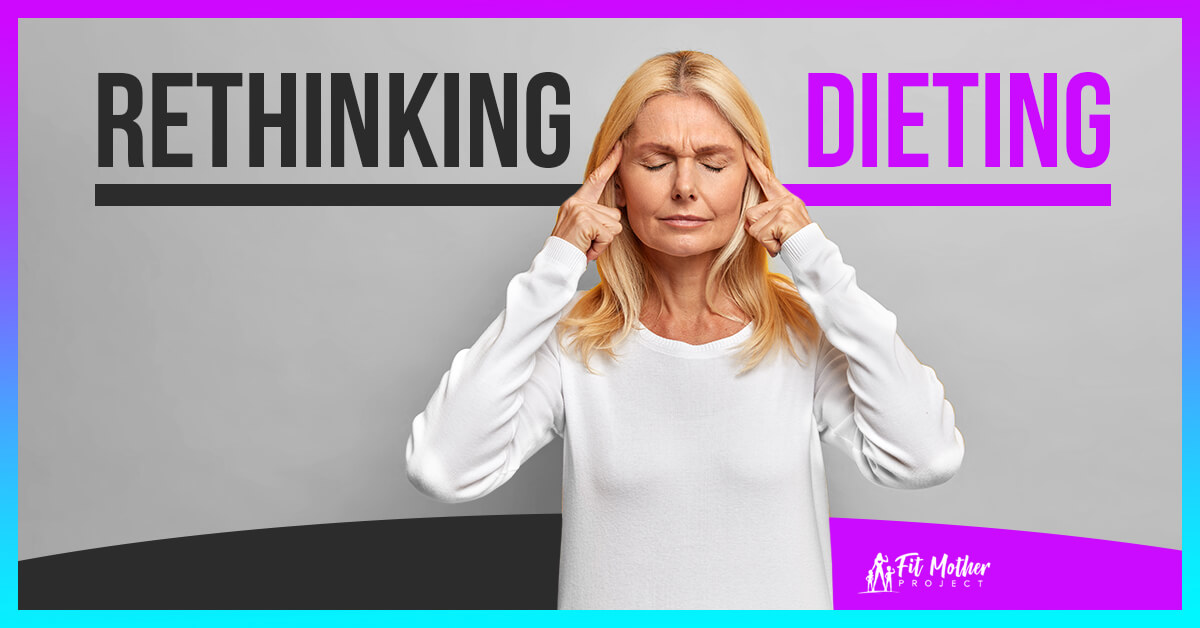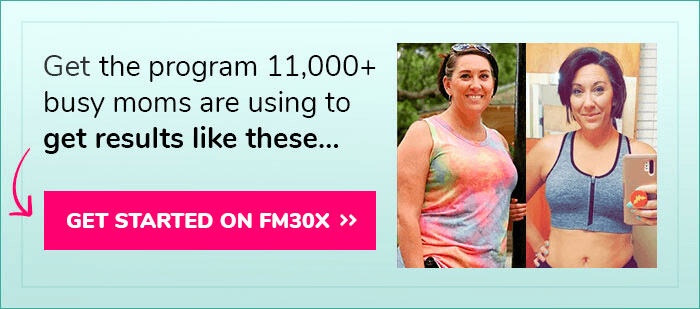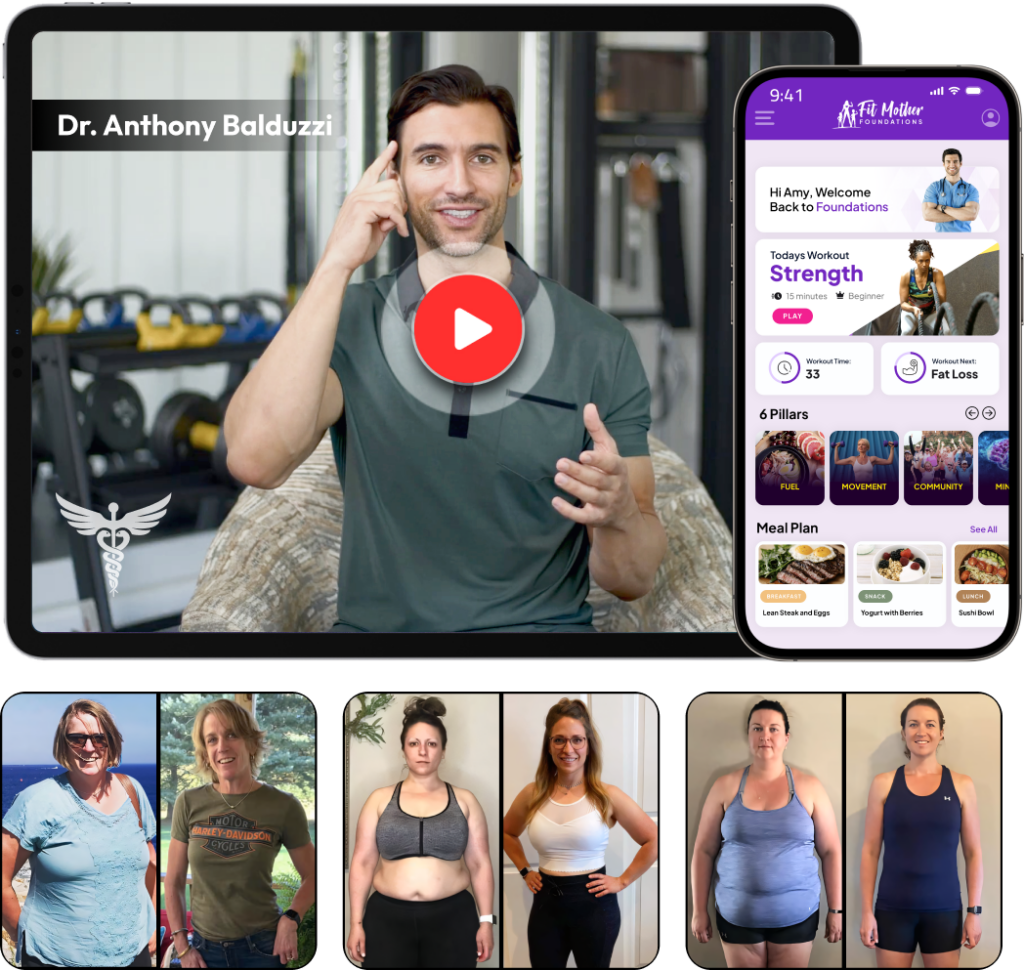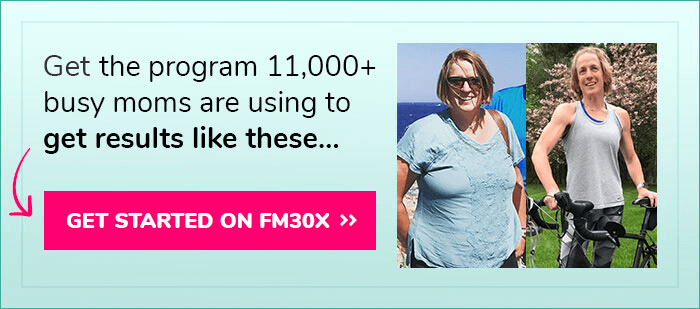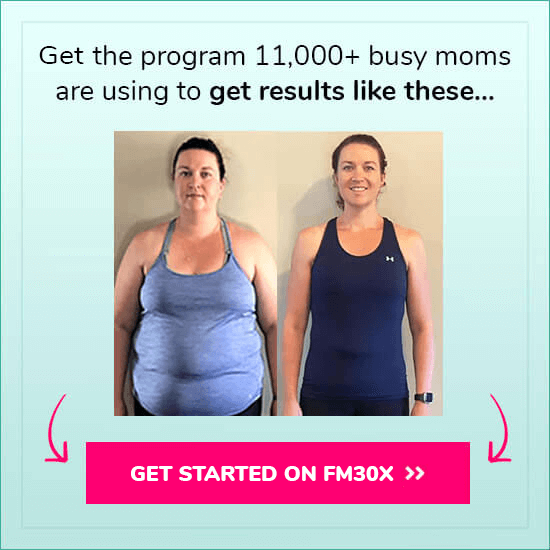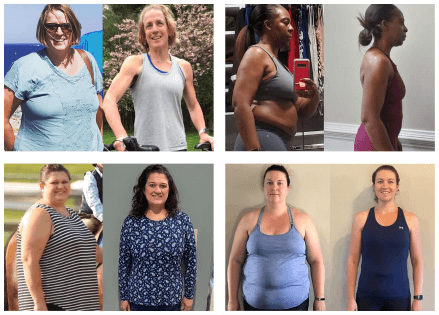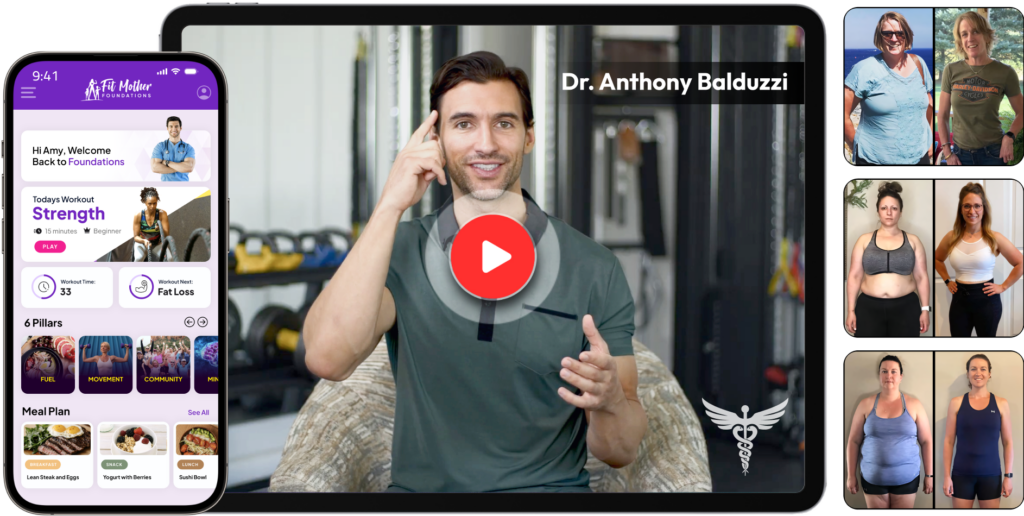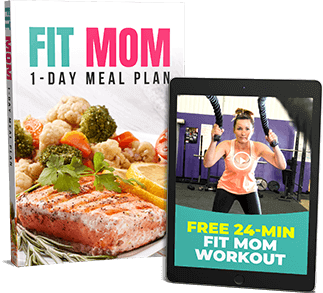Rethinking dieting is something to consider, especially if your current diet isn't working or you feel deprived when following it.
Fortunately, you don't have to starve yourself to reach and maintain a healthy weight!
Rethinking dieting involves doing what you can to add healthy foods and habits to your daily routine, rather than depriving yourself.
Eat the right balance of nutritious foods to avoid junk food cravings.
By increasing activities of daily living, you can consume enough calories throughout the day to avoid hunger.
Try the tips below to change your mindset, as well as feel satisfied and energized, while moving toward your goal weight with ease!
Shop smarter with this grocery list for weight loss!
In just 6-weeks on our FOUNDATIONS Program, you'll transform your health and body, for the rest of your life!Join our 6-Week Program...
You'll Gain Health for Life!
Rethinking Dieting: Diet Don'ts
The term dieting might make you think of the diet strategies below, but don't turn to these often-ineffective (at least long-term) weight-loss cliches:
Starvation Diets
Starvation diets may work short-term, but they can make you feel awful and aren't a good long-term healthy weight management strategy.
Not eating for long time periods can cause nutritional deficiencies, fatigue, extreme hunger, a slower metabolism, problems concentrating, rapid weight loss, and even hair loss!
Furthermore, starvation diets aren't sustainable.
Once you start increasing your calorie intake, expect to pack on unwanted pounds.
Studies show that slower weight loss is more effective for reductions in waist and hip circumference, body fat percentage, and overall fat mass, while rapid weight loss often causes decreased body water, muscle loss, and a slower metabolism in addition to fat loss.
At the end of the day, slow weight loss increases your chance of keeping lost weight off long term.
Aim to lose about 1-2 pounds per week.
You might lose more weight than this initially, especially if you have a lot of weight to lose.
The key is to eat when you feel hungry, stop eating when you feel full, and get regular exercise and plenty of sleep!
Skipping Meals
Skipping meals isn't the best weight loss strategy for several reasons.
Like with starvation diets, skipping meals can cause fatigue, hunger, and a slower metabolism.
And, meal skipping isn't necessary to effectively drop weight.
Instead of skipping meals entirely, try meal replacement shakes or bars in place of one or two of your meals.
Doing so can help you control your calorie intake, especially when you're on the go or tight on time, without feeling hungry or deprived!
Many types of meal replacement shakes and bars are packed with protein, fiber, heart-healthy fats, vitamins, and minerals.
You can make your own meal replacement shakes by blending protein powder with water, milk, or plant milk plus ice, fruit, oatmeal, almond butter, peanut butter, or other nut butters. Add ice too!
In just 6-weeks on our FOUNDATIONS Program, you'll transform your health and body, for the rest of your life!Join our 6-Week Program...
You'll Gain Health for Life!
Eliminating Certain Food Groups
If you've tried popular fad diets in the past, you probably know a little bit about low-carb and low-fat dieting.
But eliminating (or cutting way back on) certain food groups puts you at risk of fatigue, nutritional deficiencies, hair loss, unhealthy skin, and other unpleasant side effects.
Studies show that low-carb and low-fat diets are both effective for weight loss, with low-carb diets often working better than low-fat diets.
However, you need the right balance of carbohydrates, protein, and fat to look and feel your best and maintain high energy levels.
If you cut back on carbohydrates to lose weight, do so by eliminating sodas, other sugary drinks, sweets, and other foods and drinks containing added sugar.
Steer clear of white bread, white rice, white buns, and other refined grains.
Keep plant-based carbs (fruits, vegetables, whole grains, legumes, nuts, and seeds) in your meal plan and consume healthy fats (olive oil, other plant oils, avocados, nuts, and seeds) at each meal to boost satiety and enhance vitamin absorption.
Yo-Yo Dieting
Yo-yo dieting, as the name implies, happens when you go on a diet for a period of time, resort back to normal eating habits (and usually gain when you do so), and diet once again to lose weight.
This pattern isn't the best choice for healthy weight management, as you often gain and lose weight in a “yo-yo” pattern without being able to sustain an ideal weight long-term.
Instead, find healthy eating habits you can stick with for a lifetime.
In just 6-weeks on our FOUNDATIONS Program, you'll transform your health and body, for the rest of your life!Join our 6-Week Program...
You'll Gain Health for Life!
Rethinking Dieting: Diet Dos
After knowing what not to do while dieting, consider rethinking dieting by using the following tips to lose weight slowly and steadily and keep lost weight off long-term!
Boost Your Fruit and Veggie Intake
Increasing your intake of fruits and vegetables, especially lower-calorie fruits and veggies, is one of the best ways to stay full during effective weight loss.
Eat low-calorie foods first at mealtime.
Examples of fruits and veggies lower in calories include:
Lower-Calorie Fruits (1 cup)
- Watermelon: 46 calories
- Strawberries: 49 calories
- Cantaloupe: 54 calories
- Apples: 57 calories
- Honeydew melon: 61 calories
- Grapes: 62 calories
- Pineapple: 82 calories
- Orange: 85 calories
- Blueberries: 85 calories
- Pears: 92 calories
Lower-Calorie Vegetables (1 cup)
- Spinach: 7 calories
- Cucumbers: 10 calories
- Radishes: 10 calories
- Lettuce: 10-15 calories
- Celery: 15 calories
- Asparagus: 20 calories
- Summer squash: 20 calories
- Mushrooms: 20 calories
- Green beans: 20 calories
- Zucchini: 20 calories
- Green cabbage: 25 calories
- Bell peppers: 25 calories
- Cauliflower: 25 calories
- Tomatoes: 25 calories
- Carrots: 30 calories
- Kale: 33 calories
- Medium onion: 45 calories
- Broccoli: 45 calories
Starchy veggies, such as potatoes, corn, peas, and dried beans, contain more carbohydrates and calories than non-starchy vegetables.
So, eat starchy veggies after non-starchy vegetables at mealtime when weight loss is your goal.
Learn more about the best fruits for dieting!
Eat More Protein Foods
Eating more protein is beneficial when rethinking dieting for several reasons.
Protein helps you feel full from fewer calories, allows you to maintain lean muscle during weight loss, and keeps your metabolism high.
Protein is essential for healthy bones, skin, and hair.
A good rule of thumb when dieting for weight loss is to eat protein-rich foods during all meals and snacks.
Fill one-fourth of each plate of food with chicken, fish, very lean red meat, duck, seafood, eggs, tofu, seitan, or other high-protein foods.
Additional (plant-based) protein foods include peas, dried beans, lentils, other legumes, nuts, and seeds.
Three times a day, consume milk or protein-fortified plant milk, low-sugar protein shakes, Greek yogurt, cottage cheese, reduced-fat cheese, or plain kefir to aid in healthy weight management, stay full, burn fat, and maintain muscle during weight loss.
Learn how to calculate your daily protein intake!
Drink More Water
Increasing your water intake is one of the best ways to drop weight when rethinking dieting.
It's simple to do, helps you feel full from fewer calories, and gives your body's metabolism a boost.
Staying hydrated keeps energy levels high, maximizes athletic performance, and makes it easier to eat fewer calories at mealtime.
Aim to consume at least 12 cups of fluids daily for women and 16 cups per day for men.
Track your fluid intake throughout the day to ensure you're drinking enough.
While all fluids count (not just water) as part of your daily fluid consumption, limit or avoid sodas and other sugar-sweetened drinks when possible.
To make weight loss easier, drink 2 cups of water before meals.
Hit your daily hydration goals with this one simple tip!
Schedule Regular Meal Times
Eating at regular meal times is beneficial for several reasons.
Doing so helps you avoid hunger during weight loss, keeps your metabolism high, and reduces your risk of overeating after skipping a meal.
Stick with a plan or make a point to eat small meals or snacks every few hours.
An example of a healthy meal schedule includes:
- 7:00 am: 2-4 cups of water
- 8:00 am: breakfast
- 10:30 am: snack
- 1:00 pm: lunch
- 3:00 pm: snack
- 5:30 pm: dinner
- 8:00 pm: snack
You can adjust meal plans to match the time you wake up, work out, work, have hobbies or kids' activities, and go to bed.
Everyone is different, so individualized meal plans vary.
As long as you don't skip meals, there's no such thing as a bad meal schedule!
These meal timing setups are tested and PROVEN to work.
Eat Avocados and Other Plant Fats
Fats used to have a bad reputation, as fats contain 9 calories per gram vs. 4 calories per gram in carbohydrates and proteins.
However, low-fat diets aren't usually as effective as higher-fat (low-carb) meal plans.
Fats help fill you up and don't affect your blood sugar and insulin levels the way sugar and other carbs do.
Eat plenty of healthy fats, especially plant fats, during meals to boost satiety and reduce junk food cravings.
Choose avocados, olive oil, coconut oil, other plant oils, nuts, seeds, nut butters, or hummus.
Add nut butter to protein shakes, choose oil-based dressings with salads, dip fresh veggies in hummus, dip fresh fruit slices in nut butter, snack on nuts and seeds, or add avocados to any meal or snack!
Cut Back on Alcohol
While a popular social activity, drinking alcohol can diminish your health in several ways.
Any amount of alcohol increases your risk of voice box, mouth, throat, esophagus, liver, colon, rectum, and breast cancers.
Alcohol and its mixers add extra calories to your meal plan, which can make weight loss difficult.
When rethinking dieting, cut back on (or eliminate entirely) alcoholic drinks!
If you do drink, limit alcohol to one drink per day for women and two drinks daily for men.
Find out if drinking alcohol and losing weight can be done at the same time!
Eat Lower-Calorie Foods First
After drinking water before meals, eat lower-calorie foods to help you feel full from fewer calories.
Examples include salads, watermelon, other low-calorie fruits and vegetables, low-fat milk or plant milk, plain Greek yogurt, lean chicken or turkey, fish, shrimp, eggs, and other protein foods before you eat starches and fats.
Don't Deprive Yourself
When rethinking dieting, don't deprive yourself and settle for feeling hungry.
Listen to your body's hunger cues.
When you feel hungry, drink water or have a snack or small meal.
Eat low-calorie foods first and be aware of food cravings.
You might crave fruits, vegetables, whole grains, milk, protein foods, or heart-healthy fats when your body needs these foods the most!
Track Weight and Waist Circumference
The best way to stay on track with healthy eating is to record your health parameters, especially body weight and waist circumference, on a regular basis.
Doing so keeps you accountable and allows you to track progress over time.
If weight loss is your goal, aim to lose about 1-2 pounds per week until you reach your ideal weight.
To reduce chronic disease risks, aim for a waist circumference of 35 inches or less for women and 40 inches or less in men.
Calculate your body mass index (BMI) using an online BMI calculator to assess your disease risk factors.
Aim for a BMI of 18.5-24.9, which is considered healthy based on your height.
Stay on track with weight loss goals with feedback loops!
Drink Coffee or Tea
In addition to water, coffee and tea are other good options for staying hydrated and getting in a daily dose of antioxidants.
Caffeine in tea and coffee offers you extra energy during workouts and activities of daily living without the extra calories, while keeping your metabolism high.
Drink coffee or tea at breakfast, during mid-morning snacks, or at lunchtime.
Avoid consuming caffeinated drinks late in the day, as it can negatively impact the quality of your sleep.
Sit Down Less Often
Sitting down too much is a chronic disease risk factor, and greatly increases your risk of overweight and obesity.
In addition to getting regular exercise, find ways to keep your body moving throughout the day — even if it means standing up instead of sitting down when possible.
Take a break from sitting to go for walks, shop, do yard work, or complete house chores.
Stand up at your kids' games instead of sitting down.
If you have a desk job at work, take frequent breaks throughout the day to walk around or climb stairs. Or, try a sit-stand desk!
Is sitting the new smoking?
Join an Organized Weight Loss Program
Joining an organized weight loss program is one of the best ways to lose weight and maintain your ideal weight for life.
Try the Fit Mother Project to receive custom meal plans, fat-burning workouts, health coaching support from medical experts, recipes, social support from other fit moms, and more.
Try a free Fit Mother Project meal plan and workout to get started today!
Make simple changes, one at a time when rethinking dieting, and don't be too hard on yourself if you veer off track now and then.
Surround yourself with friends, family, and Fit Mom members who keep you motivated and support your healthy lifestyle!
Erin Coleman is a registered and licensed dietitian with over 15 years of freelance writing experience. She graduated with her Bachelor of Science degree in nutritional science from the University of Wisconsin-Madison, and completed her dietetic internship at Viterbo University in La Crosse, Wisconsin. Prior to beginning her career in medical content writing, Erin worked as Health Educator for the University of Wisconsin-Madison Department of Internal Medicine. Her published work appears on hundreds of health and fitness websites, and she’s currently working on publishing her first book! Erin is a wife, and a Mom to two beautiful children.
Fit Mother Project is the answer you’ve been looking for. Inside the program, you’ll receive: Our Fit Mother 30X Program (FM30X) is the answer you’ve been looking for. Inside FM30X, you’ll receive: The FOUNDATIONS Program is created by Dr. Anthony Balduzzi for Women 40+ who want Lifelong Health. In just 6-Weeks following FOUNDATIONS, you'll experience: FOUNDATIONS has transformed 60,000 lives! Are you ready to experience true lasting health & results?If you’re a busy mom who wants to finally lose weight,
get healthy, and actually keep the pounds off for good,
this is the simple program you’ll love sticking to…
If you’re a busy mom who wants to finally lose weight,
get healthy, and actually keep the pounds off for good,
this is the simple program you’ll love sticking to…
LEARN MORE ABOUT FM30X »

Learn More About FM30X

Join our 6-Week Doctor Designed Health Program.
You'll Gain Foundational Health for the Rest of Life.
*Please know that weight loss results & health changes/improvements vary from individual to individual; you may not achieve similar results. Always consult with your doctor before making health decisions. This is not medical advice – simply very well-researched info on rethinking dieting.

